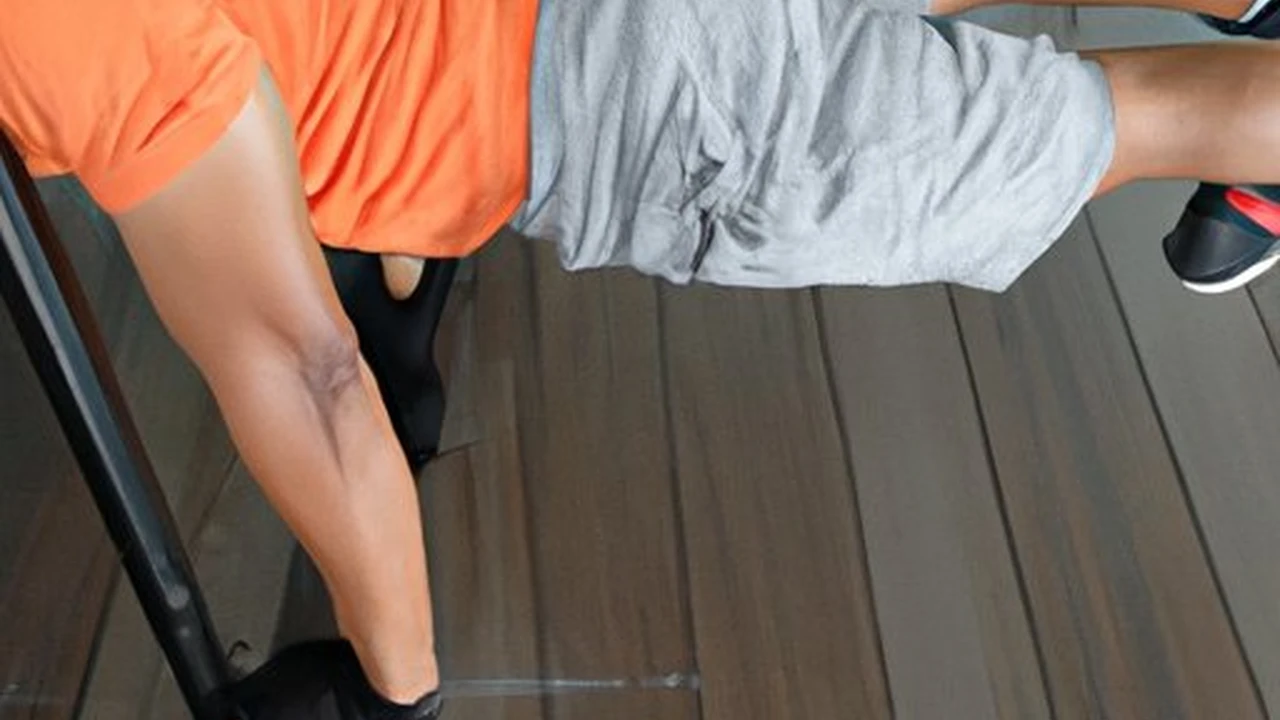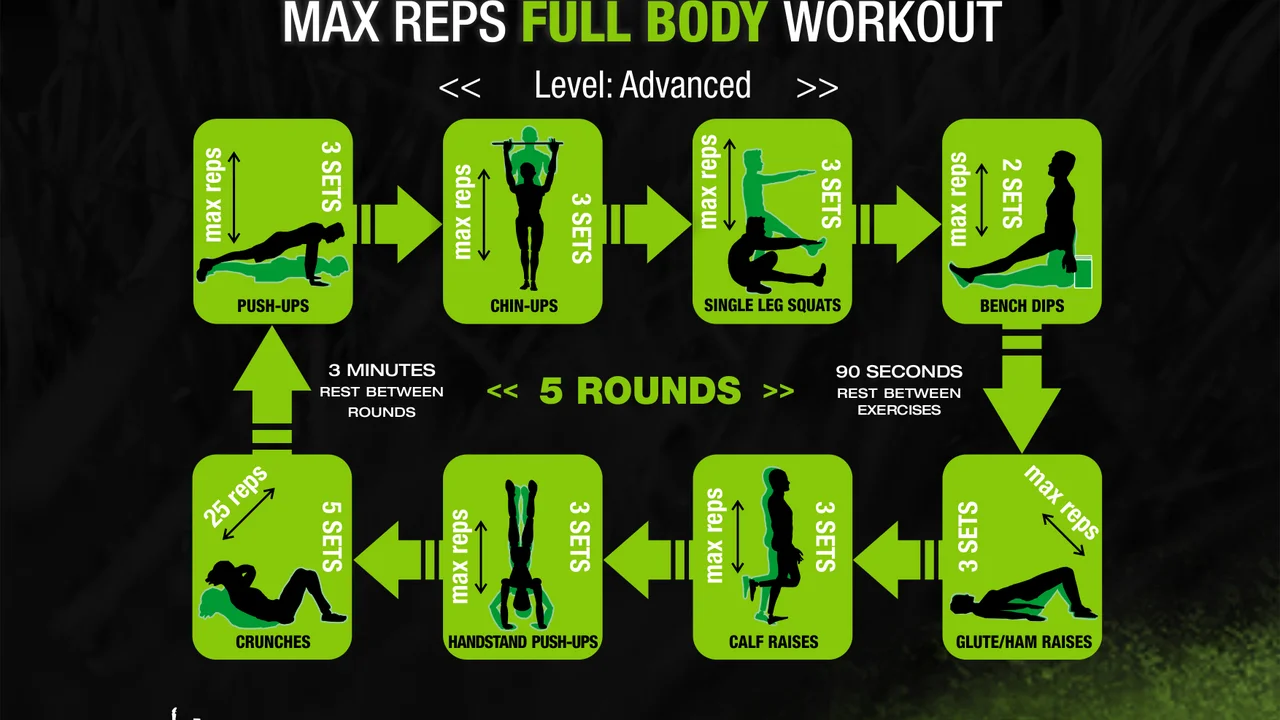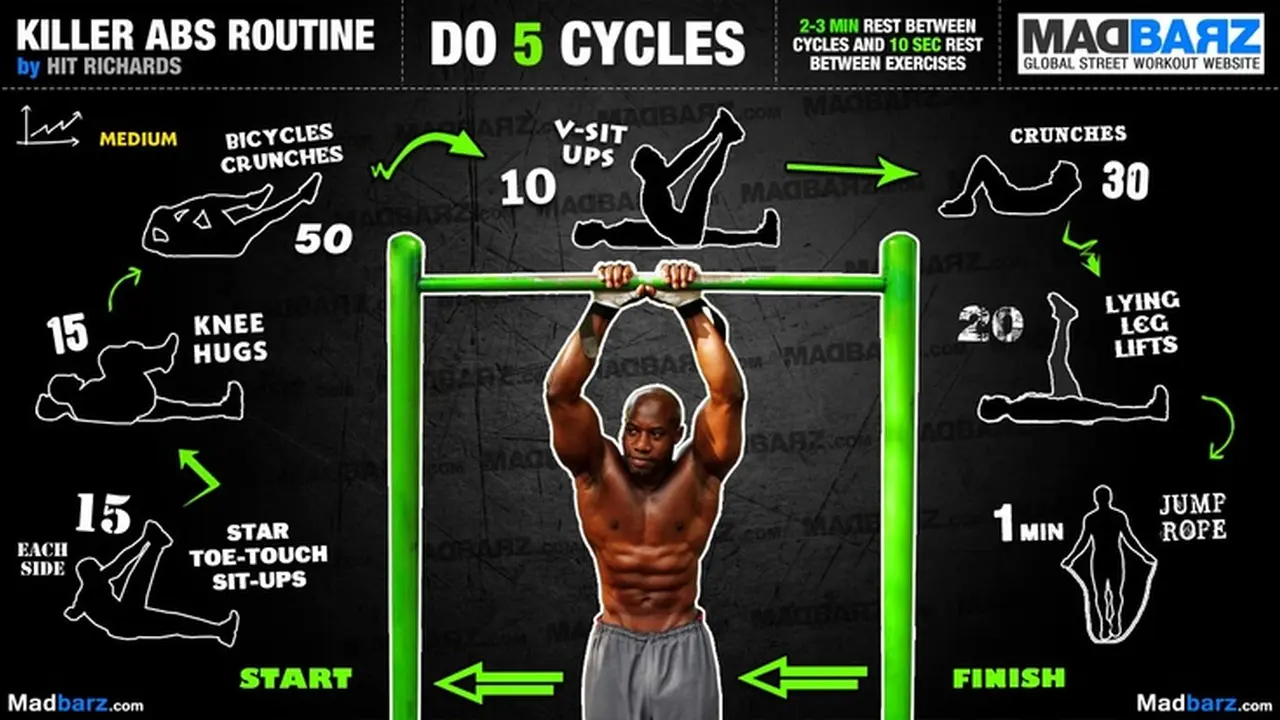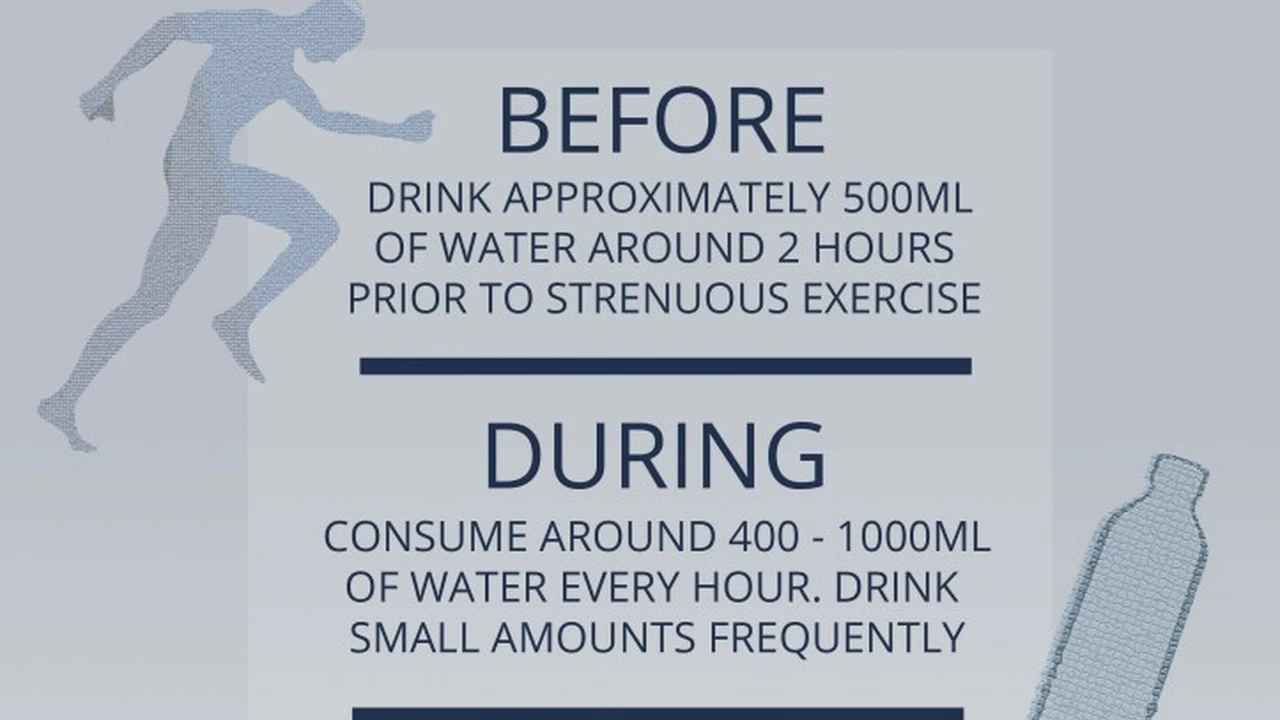Dips_ Building Upper Body Strength

Introduction to Street Workout and Fundamental Movements
Street workout, a dynamic blend of calisthenics and gymnastics, has exploded in popularity worldwide. It's more than just exercise; it's a lifestyle, a community, and a testament to the incredible potential of the human body. At its core, street workout revolves around mastering fundamental movements that build strength, flexibility, and coordination. These movements are the building blocks upon which more advanced skills are constructed. Understanding and perfecting these fundamentals is crucial for anyone serious about progressing in street workout.
Why focus on fundamental movements? Because they provide a solid foundation. Imagine trying to build a skyscraper on shaky ground – it's not going to work. Similarly, attempting advanced street workout skills without a strong foundation in the basics is a recipe for frustration and potential injury. These foundational movements engage multiple muscle groups, promoting overall strength and stability. They also improve body awareness and control, essential for executing more complex maneuvers.
In this article, we'll delve into one of the most critical fundamental movements in street workout: the muscle-up. We’ll break down the muscle-up, explore its variations, and provide a comprehensive guide to help you master this impressive feat of strength and coordination. We'll also discuss the equipment that can aid your progress and offer insights into injury prevention.
The Muscle-Up A Cornerstone of Street Workout
The muscle-up is a compound exercise that combines a pull-up and a dip, transitioning seamlessly from hanging below the bar to supporting yourself above it. It's a true test of upper body strength, requiring significant power in the back, shoulders, chest, and arms. Successfully executing a muscle-up is a rewarding experience and a visible demonstration of your dedication to training.
But the muscle-up is more than just a cool trick. It's a functional movement that translates to improved performance in other exercises and real-life activities. Think about climbing over a wall, hoisting yourself onto a platform, or even just lifting heavy objects – the strength and coordination developed through muscle-up training will be invaluable.
Let's break down the muscle-up into its key components:
* **The Pull-Up:** The initial phase of the muscle-up is essentially a pull-up. You need to generate enough force to pull your chest towards the bar. * **The Transition:** This is the trickiest part. As you reach the top of the pull-up, you need to shift your body forward and over the bar. This requires a combination of power, technique, and timing. * **The Dip:** Once your chest is above the bar, you transition into a dip. This requires pushing strength to lock out your arms and support your weight.Muscle-Up Prerequisites Strength and Skills Required
Before attempting a muscle-up, it's crucial to have a solid foundation of strength and body control. Rushing into this exercise without proper preparation can lead to injury and frustration. Here are some key prerequisites:
* **Pull-Ups:** You should be able to perform at least 8-10 strict pull-ups with good form. This demonstrates the necessary back and bicep strength to initiate the movement. * **Dips:** Similarly, you should be able to perform at least 8-10 dips on parallel bars. This ensures you have the chest, shoulder, and tricep strength to complete the dip portion of the muscle-up. * **False Grip:** The false grip is a specialized grip where your wrists are positioned above the bar, allowing for a smoother transition. This grip is not essential for all variations of the muscle-up, but it's highly recommended for beginners as it makes the transition easier. You can practice the false grip by simply hanging from the bar with your wrists positioned above it. Gradually increase the duration of your hangs as your wrist strength improves. * **Core Strength:** A strong core is essential for maintaining stability and control throughout the muscle-up. Planks, Russian twists, and leg raises are excellent exercises for building core strength. * **Shoulder Mobility:** Adequate shoulder mobility is crucial for preventing injuries and allowing for a full range of motion. Perform regular shoulder stretches and mobility drills.Muscle-Up Technique Step-by-Step Guide
Now that you have the necessary prerequisites, let's break down the muscle-up technique step-by-step:
1. **Grip:** Grip the bar slightly wider than shoulder-width apart. If you're using a false grip, position your wrists above the bar. 2. **Starting Position:** Hang from the bar with your arms fully extended. Engage your core and pull your shoulders down and back. 3. **The Pull:** Initiate the pull-up by driving your elbows down towards your sides. Focus on pulling your chest towards the bar. 4. **The Transition:** As you reach the top of the pull-up, shift your body forward and over the bar. This requires a combination of power and technique. Think about pulling the bar towards your hips and leaning forward. 5. **The Dip:** Once your chest is above the bar, transition into a dip. Lower yourself down until your elbows are bent at a 90-degree angle. 6. **Lockout:** Push back up until your arms are fully extended. 7. **Repeat:** Lower yourself back down to the starting position and repeat the movement.**Tips for a Successful Muscle-Up:**
* **Practice the False Grip:** Even if you don't plan to use it long-term, practicing the false grip will help you understand the mechanics of the transition. * **Use a Kip:** A kip is a small swing of the body that can help generate momentum and make the transition easier. However, avoid relying too heavily on the kip, as it can mask weaknesses and hinder your progress in the long run. * **Visualize the Movement:** Before attempting a muscle-up, visualize yourself successfully completing the exercise. This can help improve your confidence and coordination. * **Record Yourself:** Record yourself performing the muscle-up and analyze your technique. This can help you identify areas for improvement. * **Be Patient:** The muscle-up is a challenging exercise that takes time and dedication to master. Don't get discouraged if you don't get it right away. Keep practicing and you will eventually succeed.Muscle-Up Variations Progressions and Advanced Techniques
Once you've mastered the basic muscle-up, you can explore various variations to challenge yourself and continue progressing. Here are a few popular variations:
* **Strict Muscle-Up:** This variation eliminates the kip and relies solely on strength and technique. It's a more challenging variation that requires a higher level of strength and body control. * **Muscle-Up with Rings:** Performing the muscle-up on rings adds an element of instability, requiring greater core strength and coordination. * **L-Sit Muscle-Up:** This variation involves holding an L-sit position throughout the entire exercise, further increasing the difficulty. * **One-Arm Muscle-Up (Advanced):** This is an extremely challenging variation that requires exceptional strength and body control. It's not recommended for beginners.Here are some progressions to help you build towards the muscle-up:
* **Negative Muscle-Ups:** Start at the top of the muscle-up position (arms locked out) and slowly lower yourself down. This helps build strength in the muscles used during the eccentric phase of the exercise. * **Assisted Muscle-Ups:** Use a resistance band or a spotter to help you through the transition. This allows you to practice the movement pattern without having to generate as much force. * **Jumping Muscle-Ups:** Jump up to the bar and use the momentum to help you through the transition. This is a good way to get a feel for the movement and build confidence.Equipment for Muscle-Up Training Enhancing Your Progress
While the muscle-up primarily requires a bar and your own body weight, certain equipment can aid your training and enhance your progress. Here are a few recommendations:
* **Pull-Up Bar:** A sturdy pull-up bar is essential for muscle-up training. Look for a bar that can support your weight and is easy to grip. Consider a doorway pull-up bar, a wall-mounted pull-up bar, or a freestanding pull-up station. * **Resistance Bands:** Resistance bands can be used to assist with muscle-ups, making the exercise easier and allowing you to practice the movement pattern. They can also be used for warm-up exercises and mobility drills. * **Gymnastic Rings:** Gymnastic rings add an element of instability to the muscle-up, requiring greater core strength and coordination. They're also versatile and can be used for a variety of other exercises. * **Chalk:** Chalk can improve your grip on the bar, especially if your hands tend to sweat. * **Wrist Wraps:** Wrist wraps can provide support and stability to your wrists, especially when using a false grip.Product Recommendations and Comparison: Pull-Up Bars
Choosing the right pull-up bar is crucial for safe and effective muscle-up training. Here's a comparison of a few popular options:
* **Iron Gym Total Upper Body Workout Bar:** This is a popular doorway pull-up bar that's easy to install and remove. It's a good option for beginners and those with limited space. However, it may not be suitable for heavier individuals or those who want to perform kipping muscle-ups. * **Use Case:** Basic pull-ups and chin-ups for beginners. * **Pros:** Affordable, easy to install, portable. * **Cons:** Limited weight capacity, may damage doorframes, not suitable for advanced movements. * **Pricing:** Around $30. * **Stud Bar Ceiling Mounted Pull Up Bar:** This is a heavy-duty pull-up bar that's mounted to the ceiling. It can support a significant amount of weight and is suitable for advanced movements like kipping muscle-ups. * **Use Case:** Advanced calisthenics, kipping pull-ups, muscle-ups. * **Pros:** High weight capacity, sturdy, suitable for advanced movements. * **Cons:** Requires permanent installation, more expensive. * **Pricing:** Around $150. * **Titan Fitness Wall Mounted Pull Up Bar:** Similar to the Stud Bar, this is a wall-mounted option offering robust support. It's a good compromise between portability and stability. * **Use Case:** Intermediate to advanced calisthenics, regular pull-up training. * **Pros:** Sturdy, good weight capacity, doesn't require ceiling mounting. * **Cons:** Requires permanent installation, more expensive than doorway bars. * **Pricing:** Around $100.Product Recommendations and Comparison: Resistance Bands
Resistance bands are a valuable tool for assisted muscle-ups and warm-up exercises. Here's a comparison:
* **Serious Steel Fitness Resistance Bands:** These bands are known for their durability and consistent resistance. They come in a variety of sizes and resistance levels, making them suitable for a wide range of exercises. * **Use Case:** Assisted pull-ups and muscle-ups, warm-up exercises, mobility drills. * **Pros:** Durable, consistent resistance, wide range of sizes. * **Cons:** Can be expensive. * **Pricing:** $10 - $50 per band (depending on resistance). * **Fit Simplify Resistance Loop Exercise Bands:** These are smaller loop bands that are ideal for leg and glute exercises, but can also be used for light assistance with pull-ups. * **Use Case:** Light assistance, warm-up, rehabilitation. * **Pros:** Affordable, portable, versatile. * **Cons:** Lower resistance, not suitable for heavy assistance. * **Pricing:** Around $15 for a set.Injury Prevention in Muscle-Up Training Prioritizing Safety
Like any challenging exercise, the muscle-up carries a risk of injury if not performed correctly. Here are some tips for preventing injuries:
* **Warm-Up Properly:** Before attempting any muscle-ups, make sure to warm up your muscles with dynamic stretches and light cardio. Focus on warming up your shoulders, back, and arms. * **Use Proper Form:** Maintaining proper form is crucial for preventing injuries. Avoid using excessive momentum or kipping, as this can put unnecessary stress on your joints. * **Listen to Your Body:** If you feel any pain, stop immediately and rest. Don't push yourself too hard, especially when you're first starting out. * **Progress Gradually:** Don't try to progress too quickly. Gradually increase the difficulty of your training as your strength and technique improve. * **Strengthen Supporting Muscles:** Focus on strengthening the muscles that support your shoulders, back, and core. This will help improve your stability and reduce your risk of injury. Exercises like rotator cuff exercises, rows, and planks are excellent for strengthening these muscles. * **Cool Down and Stretch:** After your workout, cool down with light cardio and static stretches. This will help improve your flexibility and reduce muscle soreness.Nutrition and Recovery for Muscle-Up Performance Fueling Your Body
Proper nutrition and recovery are essential for maximizing your muscle-up performance and preventing injuries. Here are some key considerations:
* **Protein:** Protein is crucial for muscle growth and repair. Aim to consume at least 1 gram of protein per pound of body weight per day. Good sources of protein include lean meats, poultry, fish, eggs, and dairy products. * **Carbohydrates:** Carbohydrates provide energy for your workouts. Choose complex carbohydrates like whole grains, fruits, and vegetables. * **Healthy Fats:** Healthy fats are essential for hormone production and overall health. Good sources of healthy fats include avocados, nuts, seeds, and olive oil. * **Hydration:** Stay hydrated by drinking plenty of water throughout the day. Dehydration can impair your performance and increase your risk of injury. * **Sleep:** Get adequate sleep to allow your body to recover and rebuild muscle tissue. Aim for 7-9 hours of sleep per night. * **Rest Days:** Take rest days to allow your body to recover. Overtraining can lead to fatigue, injury, and decreased performance.Common Mistakes to Avoid When Learning Muscle-Ups
Many people struggle with muscle-ups due to common mistakes. Knowing these pitfalls can help you avoid them and accelerate your progress:
* **Insufficient Strength:** Attempting muscle-ups before having adequate pull-up and dip strength is a recipe for failure. Focus on building a solid foundation of strength first. * **Poor Technique:** Relying too much on momentum or using improper form can hinder your progress and increase your risk of injury. Focus on mastering the correct technique. * **Lack of Patience:** The muscle-up is a challenging exercise that takes time and dedication to master. Don't get discouraged if you don't get it right away. Be patient and persistent. * **Ignoring Warm-Up:** Skipping the warm-up can increase your risk of injury. Always warm up your muscles before attempting muscle-ups. * **Neglecting Recovery:** Failing to prioritize recovery can lead to fatigue, injury, and decreased performance. Get adequate sleep, nutrition, and rest.Muscle-Up Progress Tracking and Goal Setting
Tracking your progress and setting realistic goals is crucial for staying motivated and achieving your muscle-up goals. Here are some tips:
* **Record Your Workouts:** Keep a log of your workouts, including the number of sets, reps, and exercises you performed. This will help you track your progress and identify areas for improvement. * **Set Realistic Goals:** Set realistic goals that are challenging but achievable. Start with small goals and gradually increase the difficulty as you progress. * **Track Your Progress:** Track your progress by measuring your strength, endurance, and technique. This will help you stay motivated and see how far you've come. * **Celebrate Your Successes:** Celebrate your successes, no matter how small. This will help you stay motivated and positive. * **Adjust Your Plan as Needed:** Be prepared to adjust your plan as needed. If you're not making progress, re-evaluate your training and make necessary adjustments.Staying Motivated on Your Muscle-Up Journey
Learning the muscle-up can be a long and challenging journey. Staying motivated is key to your success. Here are some tips:
* **Find a Training Partner:** Training with a partner can provide support, motivation, and accountability. * **Join a Community:** Join a street workout community or online forum. This will allow you to connect with other people who are also working towards their fitness goals. * **Set Meaningful Goals:** Set goals that are meaningful to you. This will help you stay motivated and focused. * **Reward Yourself:** Reward yourself for achieving your goals. This will help you stay motivated and positive. * **Remember Your "Why":** Remember why you started this journey in the first place. This will help you stay motivated when you're feeling discouraged.Mastering the muscle-up is a significant achievement in street workout. By following this comprehensive guide, focusing on proper technique, prioritizing safety, and staying motivated, you can unlock this impressive feat of strength and coordination. Good luck on your muscle-up journey!
:max_bytes(150000):strip_icc()/277019-baked-pork-chops-with-cream-of-mushroom-soup-DDMFS-beauty-4x3-BG-7505-5762b731cf30447d9cbbbbbf387beafa.jpg)






